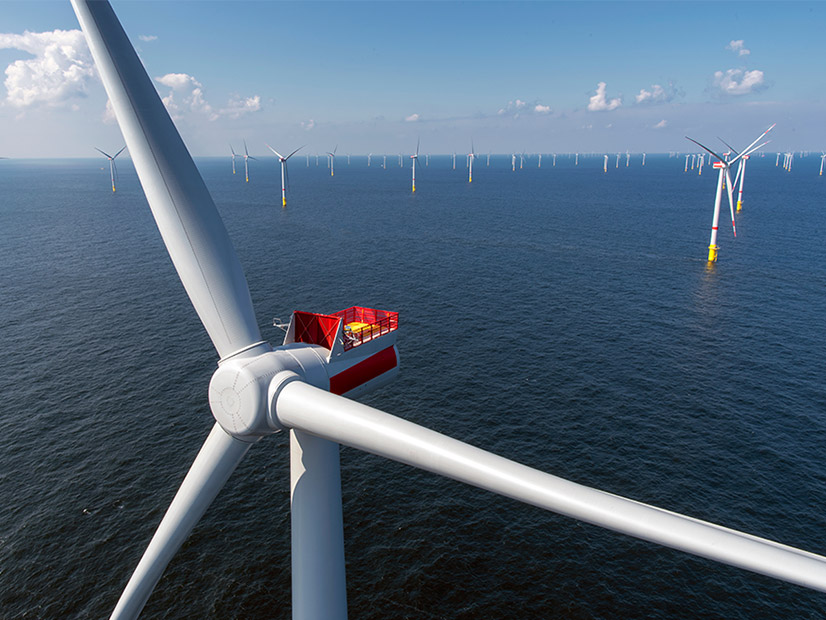A subsidiary of New York-based utility Consolidated Edison (NYSE:ED) has submitted a proposal for a 2.4-GW transmission “backbone” to the New Jersey Board of Public Utilities (BPU) to bring offshore wind-generated electricity to the PJM grid.
The proposal submitted by Con Edison Transmission would create Clean Link New Jersey, a high-voltage network of multiple undersea transmission cables.
“The offshore mesh-style network is flexible and modular to allow various offshore wind projects to plug in as they become ready to generate,” the company said in a Dec. 6 statement outlining the project. A description of the proposal posted on the PJM website states that an undersea “power corridor” through which cables will run “provides the opportunity to better manage costs and improve grid stability, while significantly reducing permitting and environmental impacts.”
Con Ed submitted the proposal under the competitive solicitation by the BPU and PJM for new transmission and grid upgrades to handle the 7,500 MW of offshore wind energy that the state expects to bring online by 2035. (See New Jersey Seeks OSW Transmission Ideas.)
The organizations issued the solicitation under FERC Order 1000’s state agreement approach, under which the BPU requested that PJM integrate the state’s offshore wind goals into the RTO’s Regional Transmission Expansion Plan process. About 80 documents are posted on the PJM webpage that lists proposals submitted under the solicitation. (See PJM, NJ Staff Brief Stakeholders on State Agreement Approach.)
Proposals were accepted until September, and PJM officials are now reviewing them. The BPU expects to begin evaluating them early next year and will decide which ones fit their needs in the third or fourth quarter.
First NJ Venture
New Jersey has so far approved three offshore wind projects in two phases totaling 3,758 MW, about half the state’s target. Danish developer Ørsted’s Ocean Wind, an 1,100-MW project, won the first solicitation in 2019, and in June the state awarded the developer a second project, its 1,148-MW Ocean Wind II, in the second solicitation. The BPU also backed Atlantic Shores, a 1,510-MW project developed by a joint venture between EDF Renewables North America and Shell New Energies US.
Con Edison Transmission’s project is the subsidiary’s first venture into New Jersey, although another subsidiary of Con Ed, Orange and Rockland Utilities, serves customers in Northern New Jersey, company spokeswoman Anne Marie Corbalis said. The release said Con Edison Transmission is “developing a portfolio of transmission projects delivering renewable energy to customers.”
The Clean Link New Jersey proposal includes plans for a 27-mile fiber optic undersea cable and 23 miles of onshore cable, and the project will be capable of handling energy from multiple projects, according to the proposal. The project consists of eight transmission components, including substations onshore and offshore, transmission lines and a 500-foot-wide right of way, which will together cost $2.75 billion, according to the proposal.
Public Service Enterprise Group (NYSE:PEG) announced in October that it has submitted several projects to the BPU/PJM solicitation in partnership with Ørsted, collectively known as Coastal Wind Link. The company declined to provide details of its submissions. Proposals listed on the PJM website under PSEG’s name only include one to conduct a series of upgrades to the Central Jersey grid system.
The list of projects on the site submitted under Coastal Wind Link includes a 92-mile offshore transmission line that will come ashore at the Raritan River and then run 6 miles onshore, mainly on public rights of way, to a converter station in Sewaren, in Middlesex County, at a cost of $848 million. Another proposal would create a converter platform in the South Hudson offshore area planned for the two Ørsted developments that will receive AC power from the wind farms, convert it to HVDC and move it to the shore, with a cost of the various components of $1 billion.
Coastal Wind Link’s proposals would “provide a reliable, resilient and cost-effective infrastructure to the state,” the company said in a statement. The proposals “encompass individual and networked solutions and would ensure that New Jersey has a clear path to connect to the offshore wind energy coming online during the next decade while minimizing environmental impacts along New Jersey’s coastline,” the statement said.

